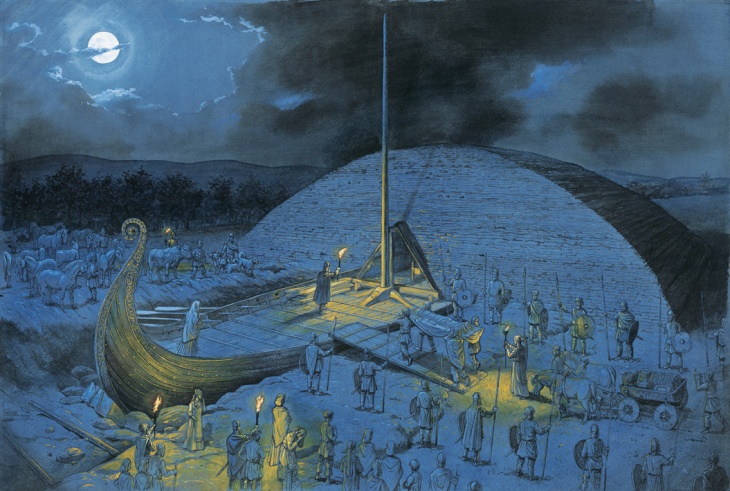- Overview
-

For over a century archaeologists have recorded the massive repertoire of objects – including other humans and animals – found in burials, producing catalogues of 'grave-goods' alongside attempts to reconstruct their 'owners'' lives. Just as these easy categorisations are now being increasingly questioned, focus is also shifting to the material evidence for the funerary process itself and what it might mean. Not least, we urgently need to understand why it is that of the many thousands of excavated graves from the Viking world, no two burial monuments are exactly the same. It is abundantly clear both from archaeological remains and contemporary textual sources that Viking funerals involved long, complex and intensely varied performances in which material manifestations of ideas were central.
The notion of the burial as both poetic statement and mortuary theatre, involving ritual plays literally enacted at the graveside, was largely pioneered by the work at Sutton Hoo, supported in later years by studies of other early Saxon grave-fields and also Scandinavian sites of the same period. Drawing on a broad range of recent Anglo-Scandinavian research including new work on iconographic sources such as picture stones and textile imagery, we can now match this narrative emphasis with textual studies that reveal how the mythological poems of the elder Edda were also composed for live performance by a cast of voices and actors.
The evidence for the Viking Age now compellingly suggests an almost infinite variety of funerary dramas, blending power and legitimation in what the prehistorian Andy Jones has called 'technologies of remembrance'. As each ritual provided a poetic passage for the individual dead into a world of ancestral stories, could these tales – whether newly-composed or endlessly reinterpreted and recycled – be the beginnings of what we know today as Norse mythology?
Image © to the artist, Anders Kvåle Rue (A moonlit reconstruction of the Oseberg ship burial, Vestfold, Norway, AD 834)
- Funding
-
This project is generously funded by a three-year Major Research Fellowship from the Leverhulme Trust, and will result in two monographs aimed respectively at academic and popular audiences.
